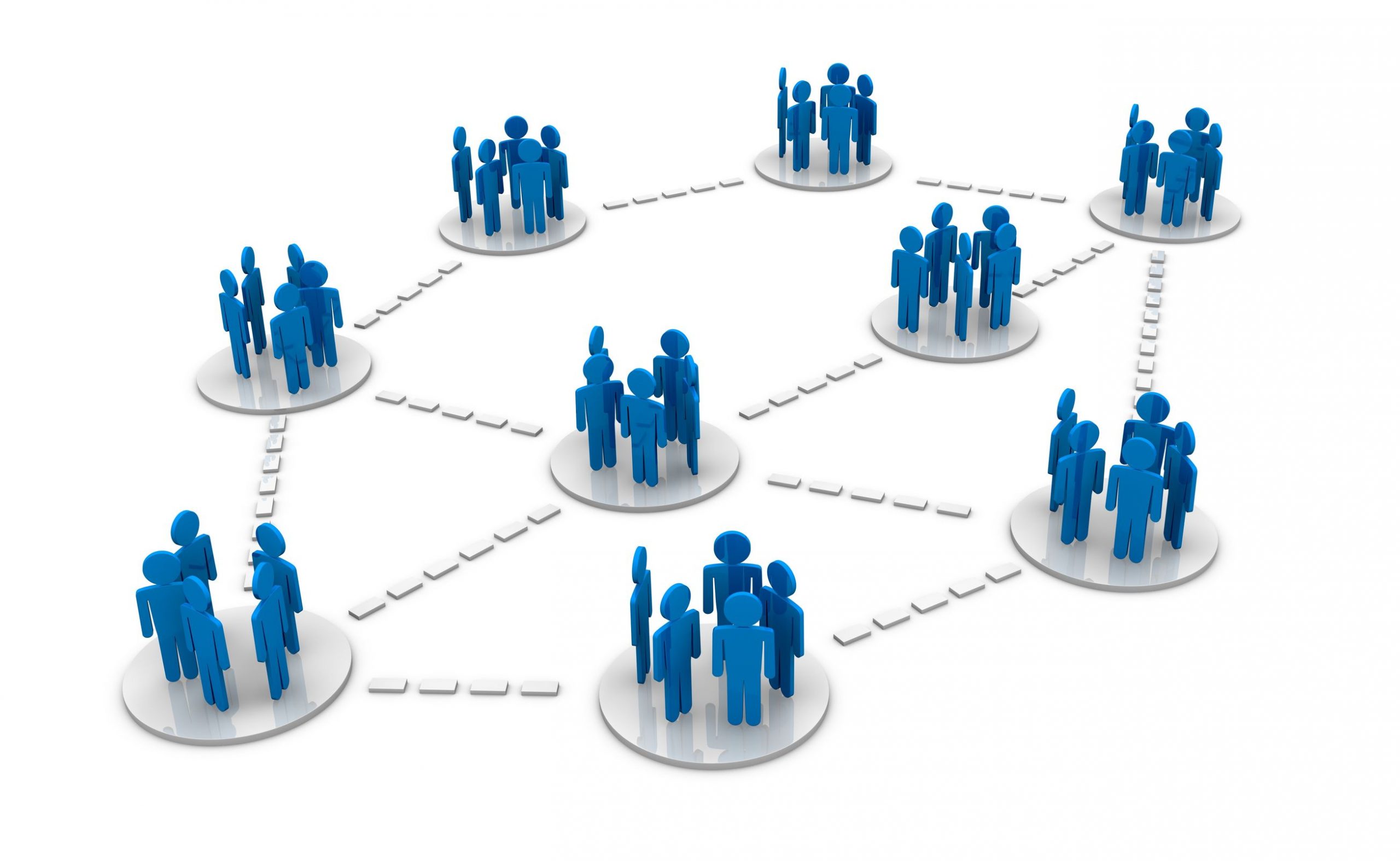How ‘networked’ comms offers speed, data and authenticity
Platforms like Workplace from Facebook make it possible for everyone to participate in internal discussions, solving problems quicker and providing important company-wide insights.

11098005 - groups of people cartoon connected each other (3d render)
In the modern workplace, two-way communication isn’t enough.
With a networked model, made possible by applications like Workplace from Facebook, information flows openly. Instead of living with one authority, organizational knowledge can come from every corner, and the whole company can crowdsource answers to pressing questions.
The result is that everyone is involved and connected, and problem-solving moves much faster. “With just two-way communication, the idea is that you rely on one person to come back to you and have all the answers,” says Paloma Redondo, internal communications business partner at Facebook. “We’re trying something different.”
While that might sound like a radical democratization of the workplace, it’s also how you make sure that real subject matter experts are consulted on any given issue—something that can be freeing for top executives.
“As a leader, you might not have all the answers you need,” Redondo says. “Relying on that feedback from employees is super important as you continue to grow your company.”
Problem solving at speed
When advocates for networked internal communications say problems will be solved faster, they are talking about a big jump in speed.
Redondo offers an anecdote from her time with a leading pharmaceutical company as an example of this in practice. An employee at the company shared a post offering feedback on a recent sales call where a customer—a dentist—was unhappy with his experience with the company. On the platform, team members were able to start connecting the dots, tagging people in the post who might have more information.
“What happened was that immediately we found the right person who could change that situation,” says Redondo, a process that would have taken a month to complete via email. Instead, the feedback loop was closed in four days.
[FREE GUIDE: Workplace EX Comms Handbook]
A different leadership model
A networked company culture runs counter to traditional “top-down” communications where leaders share a vision that employees execute. However, it’s a model that advocates say is more likely to deliver future success.
“How do you see your company in the future?” Redondo asks. “Think about whether the top-down culture that you’re implementing is what going to drive innovation.”
Leaders who can be honest and say that they don’t always have all the answers—and trust that they have hired smart, talented team members with expertise to share—will reap the benefits of an open culture by embracing network communications platforms.
A networked approach to communications also makes sure that you are taking in employee feedback about internal company choices. Redondo says that Facebook fielded a survey in March, which reported that over 40% of its workers wanted to continue working remotely after COVID-19, which helped inform the company’s decision to explore long-term remote options for employees earlier this year.
“That’s the beauty of it. Everyone has a voice.” Redondo says, “and, you can make your voice heard all over the company.”
To get leaders to adopt a new way of operating, Redondo recommends showing them the data.
“The only way you can transform that mindset is by showing results,” she says, pointing out that communicators who refuse to embrace new models—even in risk-averse, slow-to-change industries—are missing an opportunity.
Her work in pharma offers examples of how, even in a highly-regulated industry, companies that want to crowdsource the best ideas and drive innovation will need a powerful tool like Workplace to make it happen.
However, getting leaders comfortable using a platform like Workplace requires patience, even if you can promise a steady adoption rate and a familiar interface.
“Not everyone is going to feel comfortable from minute one,” Redondo says. It’s a similar process to getting top executives comfortable making videos, one that takes time and persistence. She advises taking a long-term approach and conducting constant testing with different messages and features to find the sweet spot for your leader and organization.
“Think of internal comms as a new marketing unit,” she says. “You need to market your product and company as well as your internal brand and how that comes across for employees.”
Evaluating messaging
One of the most exciting features of a tool like Workplace from Facebook is the data-driven approach to content and messaging made possible by the robust listening and analytics infrastructure built into the platform.
“You’re able to see the conversations that are bubbling up as well as the sentiment based on what you’re seeing in the platform,” Redondo says. By tracking what works and what doesn’t, as well as the kinds of conversations are happening in different groups, you can identify hot topics and trends to identifythe kinds of groups that are being created and how active they are.
Instead of relying on a colleague to find important internal partners for your next campaign, a tool like Workplace puts these partners front and center. The platform brings them to you within a single click—something that is immensely valuable for remote teams in the COVID-19 era.
Redondo cites Facebook’s employee resource group for women as an example of this communications model in practice. The group or community is given the power of communication and the message can come from an authentic voice within the organization.
In fact, the tool is particularly helpful for all employee resource groups, a part of internal communications that has gotten a closer look in recent months.
Redondo says that Facebook has a lot of these groups where employees can go for support, and Workplace has made these groups more accessible during work-from-home restrictions brought on by the global pandemic.
For example, Facebook’s London branch is hosting its London Community Week, which comprises some 15 events for different groups in the London office. Before, these events were held in-person and were only accessible to those who could be physically present. Now, everyone at Facebook can join in virtually.
“You don’t need a big budget,” Redondo says. “You just need to have access to a laptop or your phone to start creating these amazing experiences for employees.”
Protecting your community
Opening up the floor to your entire company doesn’t mean that you don’t moderate the conversation. A networked communications model, while offering many positives, also requires careful organization and management.
“Sharing, creativity, humor and open-debate are core to our culture and critical to our mission. To achieve this, we have put in place the right guardrails to ensure we keep healthy debates within the platform and ultimately be respectful to each other”, Redondo says. She also recommends partnering with other departments like Human Resources to maintain cordial and professional dialogue on your platform.
However, she says that employees can be expected to keep things professional on a Workplace page with similar programs that are already in place for monitoring bad behavior on channels like email. It’s crucial to establish really clear principles around appropriate workplace communications, she says.
You can also set up designated channels for official updates so that internal audiences can access accurate information in a crisis. During COVID-19, Facebook created official channels that shared information about things like offices being closed and reopened. Official messages from the company could be orchestrated between the legal, HR, security and communications departments, offering employees direct and accurate updates.
Authenticity
Perhaps the biggest upside to a network communications model on a platform like Workplace is the authenticity that can be found when employees use their own voice on the platform. “Authenticity is actually what wins in social media,” Redondo says, and it’s an essential ingredient for Workplace to do its magic. “It’s not trying to push someone through a template,” she says, but rather allowing employees to bring their true selves to the virtual workplace, making sure that everyone has their own unique style.
“We respect that, and we’ll learn from what works and what doesn’t.”
This article is in partnership with Workplace from Facebook. Learn more about developing a modern employee experience by downloading Facebook’s “Workplace EX Comms Handbook.”







